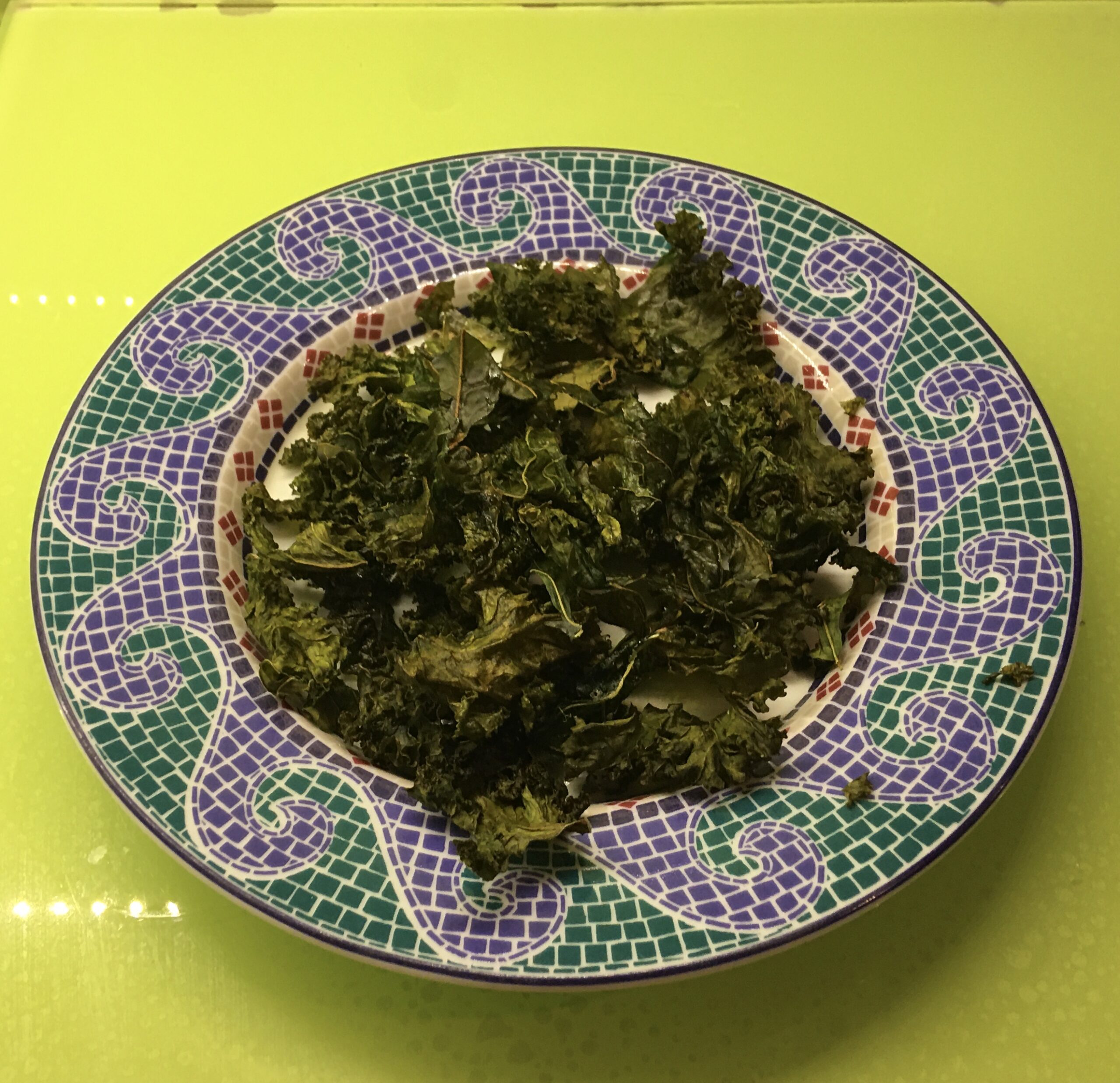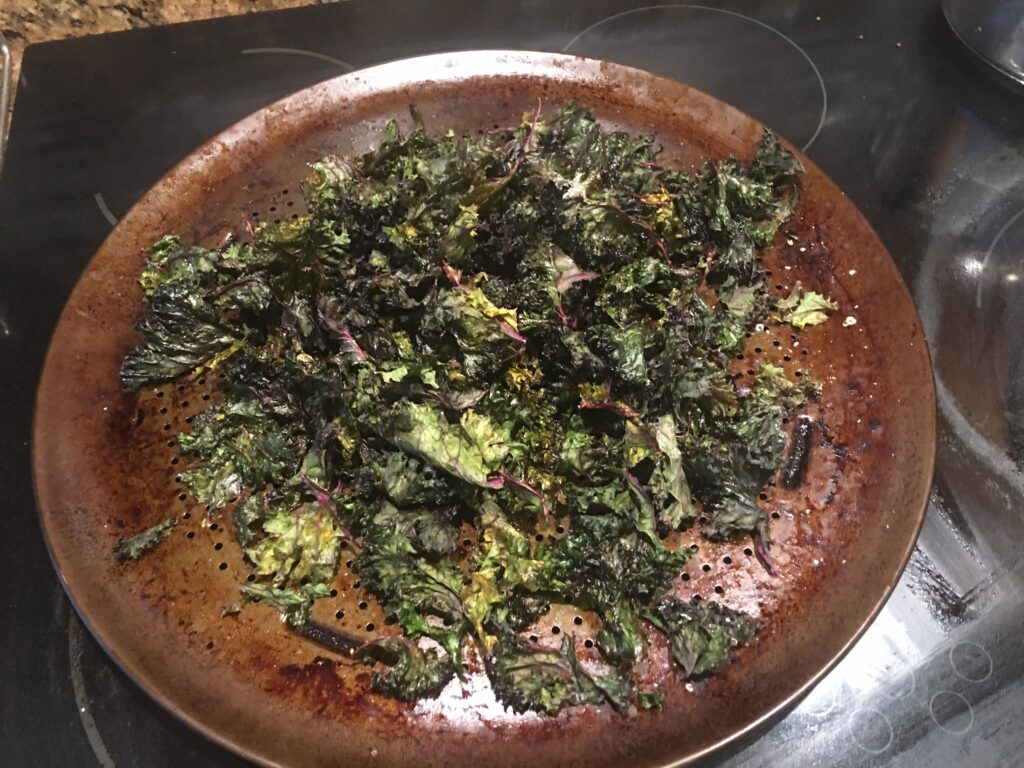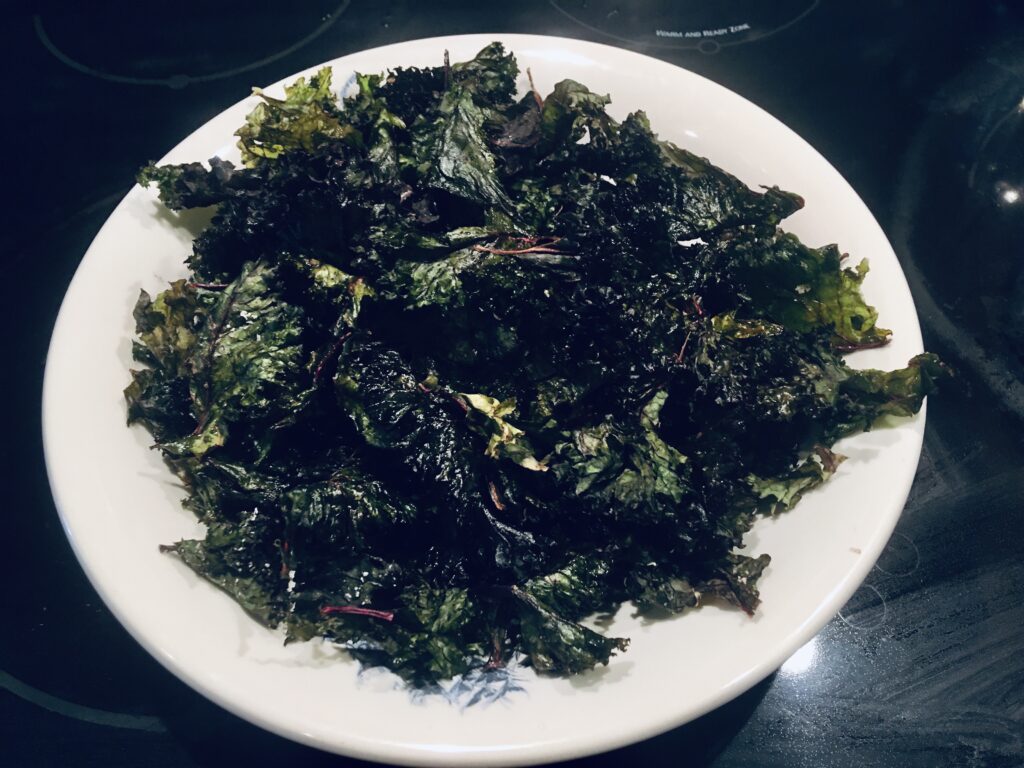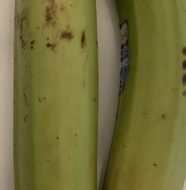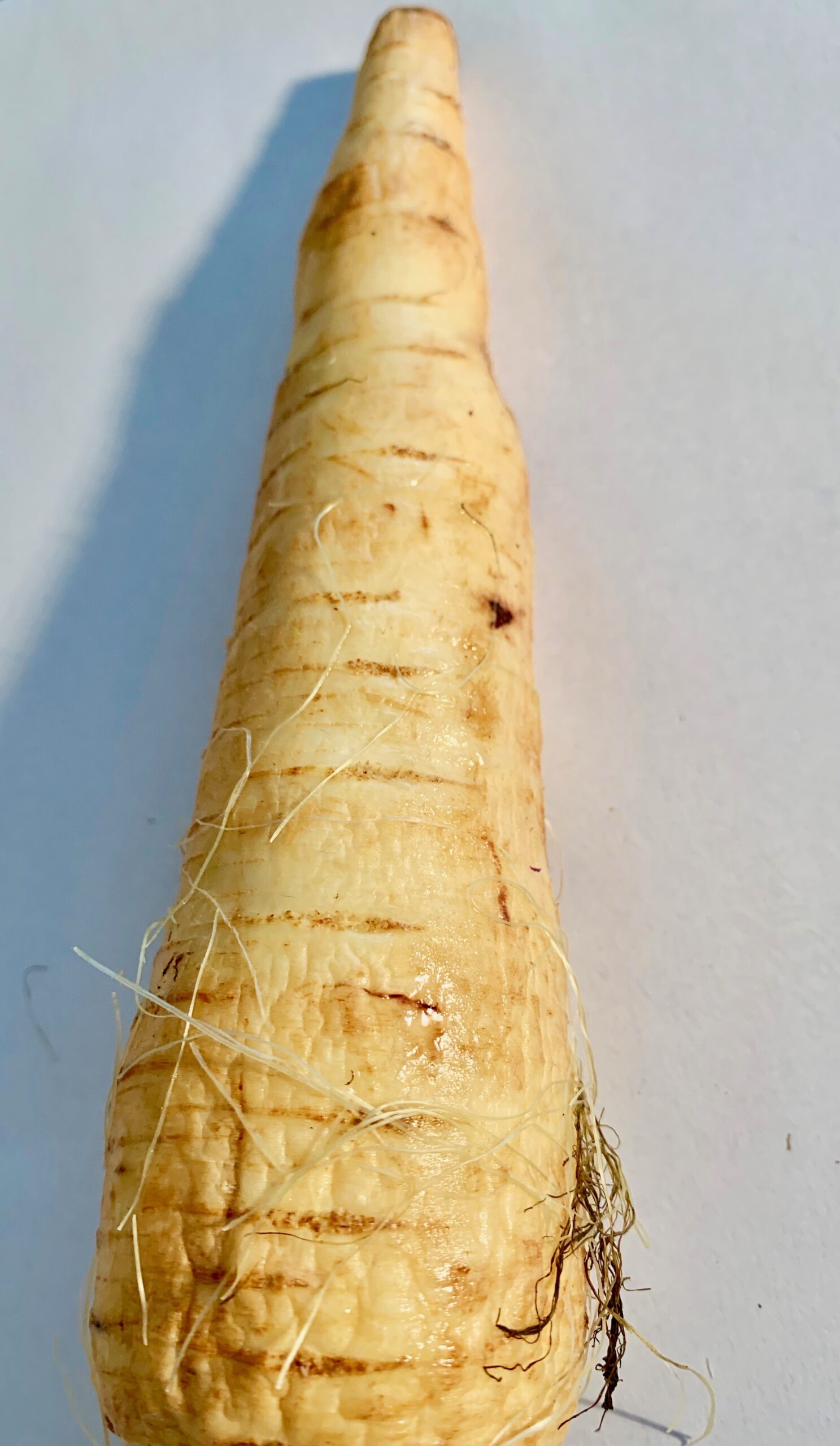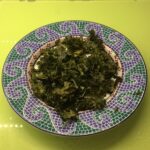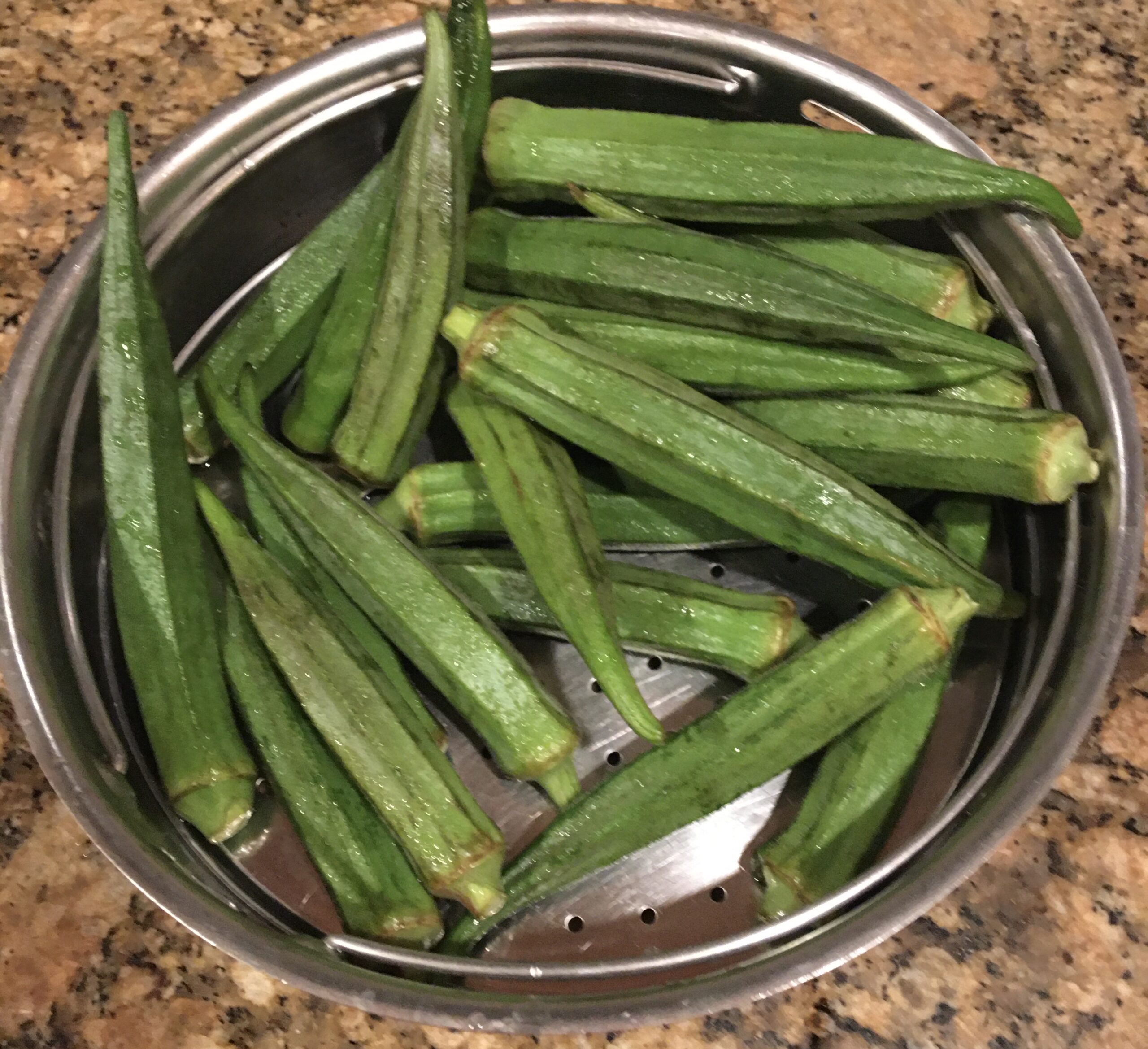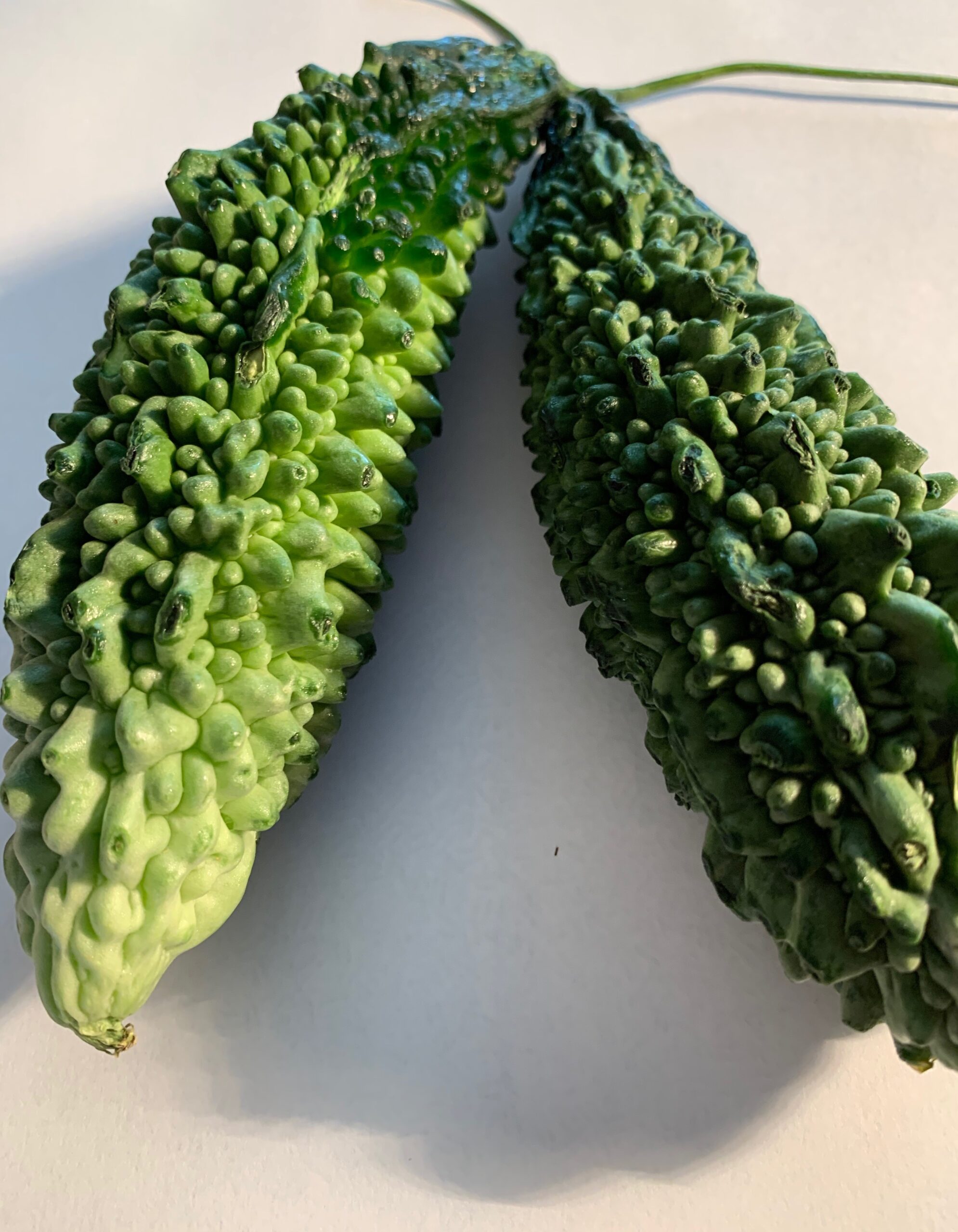Kale is a loose leaved edible plant derived from the cabbage of the mustard family (Brassicaceae) with a scientific name Brassica Oleracia var.
Buying & Storage: Kale is available best during winter months from November to March. Exposure of crop to light frost increases its eating quality. If harvesting pick leaves from the bottom, as the plant grows. Buy fresh green leaves featuring crispy, crunchy, with a brilliant dark blue color. Kale is perishable quickly like Swiss chard & should be used as soon as possible. If storing set refrigerator temperature below 35F and at high humidity.
History: Kale originated in the Eastern Mediterranean and Asia Minor. It was cultivated for food beginning 2000BC. Colonists brought it to N. America in the 16th century.
Kale Recipes
Kale can be juiced, mixed in salads, stews, soups, and baked into chips or grilled on pizza
Kale juice
Kale Salad
Kale Chips (Baked)
Kale Sauté
Kale Pizza
Nutrition Facts of Kale
| GI =15; Gl=2; | Minerals | Vitamins |
| Energy 35kcal – 2% | Sodium 53mg – 3.5% | Folates 62 mug – 15.5% |
| Carb 4.42g – 3% | Potassium 348 mg – 7% | Niacin 1.18 mg – 7% |
| Protein 2.92 g -5 % | Calcium 254 mg – 25% | Pantothenic acid mg 0.37 – 7% |
| Fat 1.49 g – 5% | Copper 0.053 – 6% | Pyridoxine mg 0.147 – 11% |
| Cholesterol 0mg – 0% | Iron 1.8mg – 20% | Riboflavin 0.347 mg – 27% |
| Fiber -4.1g – 11% | Magnesium 33 mg – 8% | Thiamin 0.113mg – 9% |
| Water 106 g | Manganese 0.92mg – 40% | Vitamin A 4812 IU – 160% |
| Isorhamnentin 23.6mg | Phosphorous 55mg – 8% | Vitamin C 93.4 mg – 156% |
| Kaempferol 46.8 mg | Selenium 0.9mug – 1.6% | Vitamin K 389.6 mug – 325% |
| Quercitin 22.6mg | Zinc 0.39mg – 3.5% |
(Source: USDA National Nutrient data base)
https://www.nutrition-and-you.com/kale.html
Health Benefits of Kale
- Kale aids in protecting eyesight: Kale contains the vitamins Lutein & Zeaxanthin which contribute to healthy eye cella and lower the risk of age-related macular degeneration.
- Kale aids digestion and excretion: Being fibrous Kale helps in improving digestion and helps in moving waste through the alimentary canal thus prevention constipation.
- Kale has high iron content: Iron helps in the formation of hemoglobin and enzymes, transports oxygen to different body parts, aids in cell growth & proper liver function.
- Kale is high in Vitamin K that promotes healthy blood clotting: Vitamin K1 has always been known as the coagulation vitamin since it helps keep the body’s clotting mechanism to function when needed in a bleeding cut or accident. Vitamin K2 activates 17 proteins.
- Kale Lowers the risk of Heart disease: The potassium in Kale may reduce the risk of heart disease and stroke.
- Kale helps prevent Cancer: It contains potential cancer-fighting properties. Being cruciferous it contains Glucosinolates (natural sulfur compounds that give its bitter taste). These compounds during digestion break down to form Indole and Isothiocyanates. Both of them help detoxify the body and hinder the growth of cancer by functioning as an anti-inflammatory and protecting DNA cells from damage.
Vitamin C in Kale can also reduce inflammation, strengthen the immune system, and fight oxidative stress that can help prevent cancer and other illnesses like the common cold and flu. The recommended Vitamin C is 60mg for adults which are about 3 cups of cooked kale.
- Kale helps with weight loss:Being low in calories, high in water and fiber which keeps you full longer (satiates) and prevents overeating. Kale’s high water content may also increase urination and help your body flush out excess weight.
How to Bake Kale Chips
- Wash & wipe Kale leaves on both sides; cut stems through each leaf into halves; tear into smaller pieces 2″ wide; place in a colander.
- Mix olive oil & salt; pour on Kale leaves and rub with fingers; place leaves on a baking tray.
- Preheat oven 300F. Bake Kale leaves for 15-20 min.
- Remove from oven and allow cooling.
- Store in an airtight container.
Serve Kale chips by itself as a snack or as a side dish
TIPS
Variation: Collard greens can be mixed with Kale & baked together that reduces the bitterness of Kale

